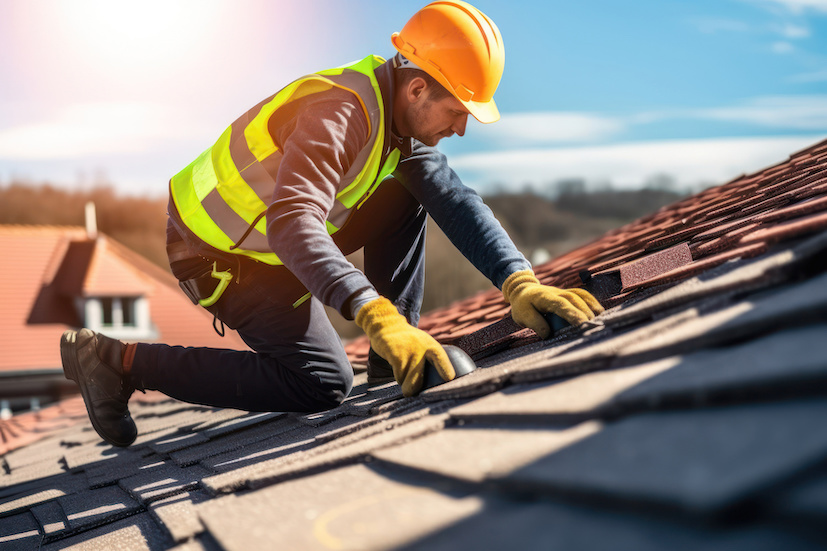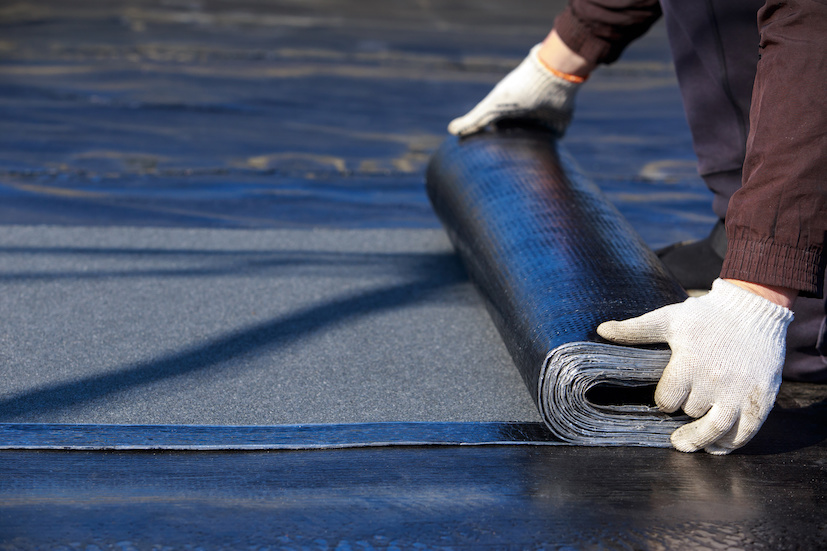If you’re planning a roofing installation, knowing what to expect and how to prepare is essential for making sure the job goes smoothly. Depending on the type of roofing material you opt for, the installation process can vary so it’s useful to know the steps involved!
In this helpful guide, we’ll provide an overview of different types of roof installations, associated costs, and considerations when preparing for installation.
Let’s get stuck in…
Tile Roofing Installation
When it comes to tiled roofing installation, tiles can require more time and labour to install than other roofing types but can last many years when fitted by an experienced roofing contractor.
When installing roof tiles, your roofing company will start by applying an underlay material on top of the roof deck. This helps to provide a safe, breathable base that protects your roof from weather-related damage and acts as a moisture barrier.
Once the underlayment is installed, your contractor will then install a drip edge around the perimeter of the roof. This is a type of metal flashing that directs water away from the roof and prevents rotting fascias.
The actual installation of the tiles is typically done from the bottom up. The first row of tiles is installed along the bottom edge of the roof, followed by subsequent rows until the entire roof is covered. Each tile is secured with screws or nails to ensure it is firmly in place.
With roof tile installation, it’s vital to ensure the tiles are properly aligned and spaced to prevent leaks and create a uniform appearance. Once all the tiles are installed, the roof is inspected for any gaps or other issues that need to be addressed before the installation is considered complete.
Flat Roofing Installation
Flat roofing is a popular commercial roofing type but can be used for contemporary residential roofing. Made with either a single-ply membrane or built-up roofing materials, flat roofs tend to be versatile and efficient which allows them to hold up well in adverse weather.
To start the installation, your roofing contractor will begin the process by cleaning the roof deck and ensuring it is free of any debris.
As with tiled roof installation, once the deck is cleaned, an underlayment material will then be installed on top to act as a moisture barrier. This layer will prevent water from seeping into the building and causing damage.
After the underlayment is installed, your contractor will apply the flat roofing material. This involves carefully rolling out the roofing material over the underlayment and securing it in place using adhesive or fasteners.
Once the roofing material is in place, the edges will then be sealed with flashing to prevent water from getting underneath.
After installation, the flat roof will be thoroughly inspected for any gaps or leaks.
Flat roofing requires maintenance and regular inspections to protect the longevity and effectiveness of the roof. It’s always helpful to discuss your maintenance plan with your roofing provider so that you can learn how to care for your roof properly.
Roof Installation Costs
The cost of a roof installation usually depends on the type of material being used and the size of the roof.
To find out about pricing, it’s best to speak with your roofing company before starting your project. That way, you can get an accurate estimate of material and labour costs.
How Do I Prepare for Roof Installation?
Preparing for a roof installation can save time, money, and stress during the process.
Before the work commences, it’s important to assess the area and check if there are any large trees or encroaching branches which may interfere with the installation process. If you are unsure about whether a nearby tree might be a problem, speak to your roofing contractor.
Roofing crews will always do their best to carry out the job to the best of their ability; however, in some rare instances, you may need to arrange a visit from a tree surgeon before beginning your roof installation.
Another consideration when preparing for a roof installation is planning permission and building regulations. If your property is a listed building, located in an area of outstanding natural beauty or you wish to adjust the height of your roof, then planning permission will need to be obtained.
If you have any queries or concerns surrounding building regulations or planning permission, our experienced roofing specialists are always available to help you out so do not be afraid to reach out to our friendly team.
How Long Will My Roof Installation Take?
The length of your installation is unique to each project; however, on average, a typical roof installation in the UK can take anywhere from a few days to a few weeks.
For a small or straightforward roof replacement on a standard-sized house, the installation process could be completed within a week or so. Whereas, more complex projects, such as those involving multiple roof levels, roof windows, intricate designs, or the need for extensive roof repairs, may take longer.
It’s worth noting that adverse weather conditions, such as heavy rain or strong winds, can have an impact on the installation timeline. Reputable roofing contractors will always prioritise safety and quality workmanship, so they may need to delay or reschedule the installation if the weather conditions are unfavourable.
Do I Need to Be Home During My Roof Installation?
It is generally not necessary for you to be home during your roof installation, as long as you have communicated with your roofing contractor beforehand and given them access to the property.
With that being said, it is strongly advised that you are present at the beginning of the installation process to ensure that everything is going according to plan and to answer any questions that your contractor may have.
If you cannot be present, it is important to leave clear instructions for the roofing crew and to make sure they have a way to contact you if needed.
Ultimately, the decision to be present during the installation depends on your personal preference and availability.
How Does Commercial Roofing Installation Differ from Residential?
Commercial roofing installation can differ from residential roofing installation in a number of ways.
Commercial roofs are generally much larger and more complex than residential roofs so need specialised equipment and a higher level of expertise to install properly. In addition, they are often designed to support heavy equipment, such as HVAC systems or solar panels, which can require adequate structural support.
When it comes to commercial installations, health and safety is paramount. Commercial roofing projects typically involve larger work crews and heavier equipment, which can pose greater risks for workers and require more stringent safety protocols.
Start Planning Your Roof Installation
Our expert roofers have installed thousands of new roofs across Bath and the South West so when you deal with S&J, you know that you are enlisting help from a quality roofing contractor that you can trust.
If you would like to renew your residential or commercial roof, get in touch with our team. We’ll discuss all of your requirements and provide you with a free, no-obligation quote.
Want to see our latest work? Check out our recent roofing case studies.






